Your cart is currently empty!
Tag: Solutions
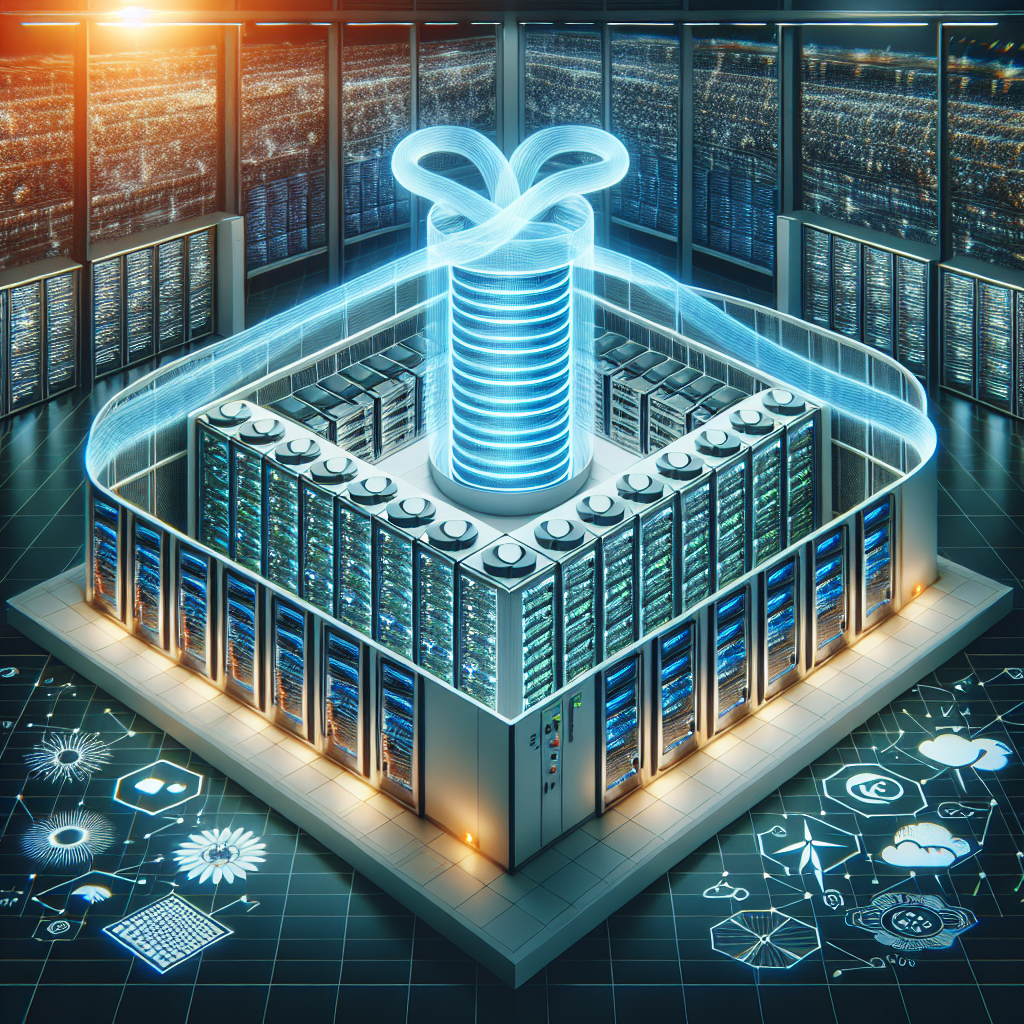
Innovative Solutions for Data Center Cooling
Data centers play a crucial role in today’s digital world, serving as the backbone for storing, processing, and distributing vast amounts of data. However, one of the biggest challenges faced by data centers is managing the heat generated by the servers and other equipment, as overheating can lead to system failures and downtime. In order to address this issue, data center operators are constantly seeking innovative solutions for cooling their facilities more efficiently and effectively.One of the most common methods of cooling data centers is through the use of air conditioning systems. However, these systems can be energy-intensive and costly to operate, leading many data center operators to explore alternative cooling technologies. One such technology is liquid cooling, which involves circulating a liquid coolant through the servers to absorb heat and then dissipating it through a heat exchanger. Liquid cooling can be more energy-efficient than traditional air conditioning systems, as liquids have a higher heat capacity and can remove heat more effectively.
Another innovative solution for data center cooling is the use of free cooling, which takes advantage of natural sources of cooling such as ambient air or ground water. By using outside air or ground water to cool the data center instead of relying solely on mechanical systems, data center operators can significantly reduce their energy consumption and operating costs. Free cooling systems can be particularly effective in regions with cooler climates or where there is access to natural sources of cold water.
In addition to liquid cooling and free cooling, data center operators are also exploring the use of advanced cooling technologies such as direct-to-chip cooling and immersion cooling. Direct-to-chip cooling involves placing cooling modules directly on the processors to remove heat at the source, while immersion cooling submerges the servers in a non-conductive liquid coolant to dissipate heat more efficiently. These technologies can help data centers achieve higher levels of cooling efficiency and reduce their environmental impact.
Furthermore, data center operators are increasingly turning to data center infrastructure management (DCIM) software to optimize their cooling systems and improve overall energy efficiency. DCIM software allows operators to monitor and control various aspects of their data center environment, including temperature, humidity, and airflow, in real-time. By using DCIM software to analyze data and make informed decisions, data center operators can identify opportunities for improving cooling efficiency and reducing energy consumption.
In conclusion, innovative solutions for data center cooling are essential for ensuring the reliability and sustainability of data centers in the digital age. By exploring technologies such as liquid cooling, free cooling, direct-to-chip cooling, and DCIM software, data center operators can achieve higher levels of cooling efficiency, reduce energy consumption, and lower operating costs. As the demand for data center services continues to grow, it is crucial for operators to invest in cutting-edge cooling technologies to meet the challenges of today’s data-driven world.
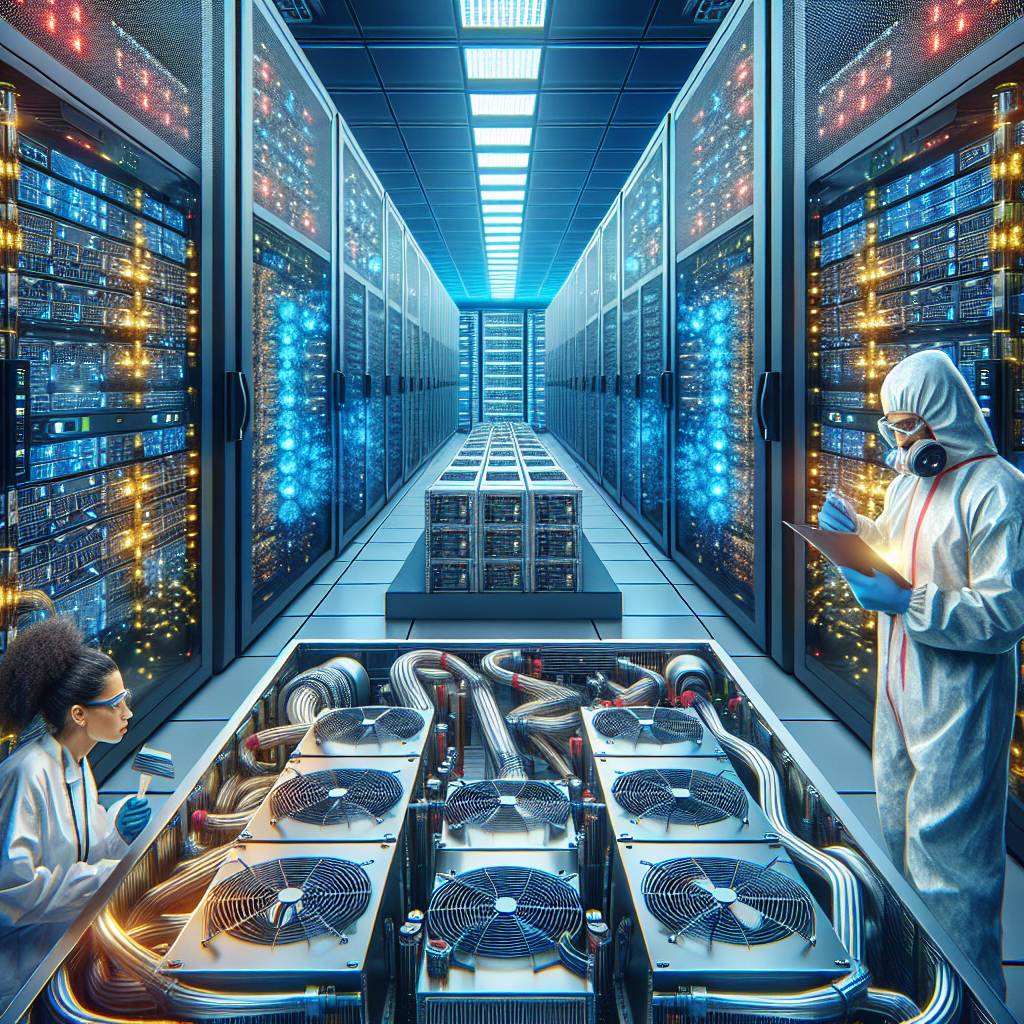
Maximizing Efficiency: HVAC Solutions for Data Centers
Data centers are an essential part of modern businesses, housing the critical IT infrastructure that supports operations and stores vital data. As data centers continue to grow in size and complexity, the demand for efficient HVAC solutions to maintain optimal operating conditions is on the rise. Maximizing efficiency in data center cooling is crucial not only for reducing energy costs but also for ensuring the reliability and performance of the equipment housed within.One of the key challenges in cooling data centers is the high heat load generated by the servers and other IT equipment. Traditional HVAC systems may struggle to keep up with the cooling demands of these high-density environments, leading to hot spots and potential equipment failures. To address this issue, many data center operators are turning to innovative cooling solutions that offer greater efficiency and scalability.
One increasingly popular option is the use of precision air conditioning systems, which provide highly targeted cooling to specific areas within the data center. By delivering cool air directly to where it is needed most, these systems can help to eliminate hot spots and improve overall efficiency. In addition, precision air conditioning systems can be easily scaled up or down to meet changing cooling demands, making them a flexible and cost-effective solution for data center cooling.
Another effective HVAC solution for data centers is the use of in-row cooling units. These units are installed directly next to the server racks, providing efficient cooling at the source of the heat load. In-row cooling units offer several advantages over traditional perimeter cooling systems, including higher efficiency, reduced energy consumption, and improved airflow management. By bringing the cooling closer to the heat source, in-row units can help to optimize airflow and temperature control within the data center.
In addition to precision air conditioning and in-row cooling units, data center operators can also benefit from the use of intelligent HVAC control systems. These systems use advanced algorithms and sensors to continuously monitor and adjust cooling parameters based on real-time data, optimizing energy usage and ensuring consistent temperature and humidity levels. By automating the cooling process and fine-tuning system performance, intelligent HVAC control systems can help to maximize efficiency and minimize downtime in data center environments.
Overall, maximizing efficiency in data center cooling requires a holistic approach that takes into account the unique requirements and challenges of these high-density environments. By investing in innovative HVAC solutions such as precision air conditioning, in-row cooling units, and intelligent control systems, data center operators can achieve significant energy savings, improve equipment reliability, and enhance overall performance. With the right HVAC solutions in place, data centers can operate more efficiently and effectively, supporting the growth and success of the businesses they serve.
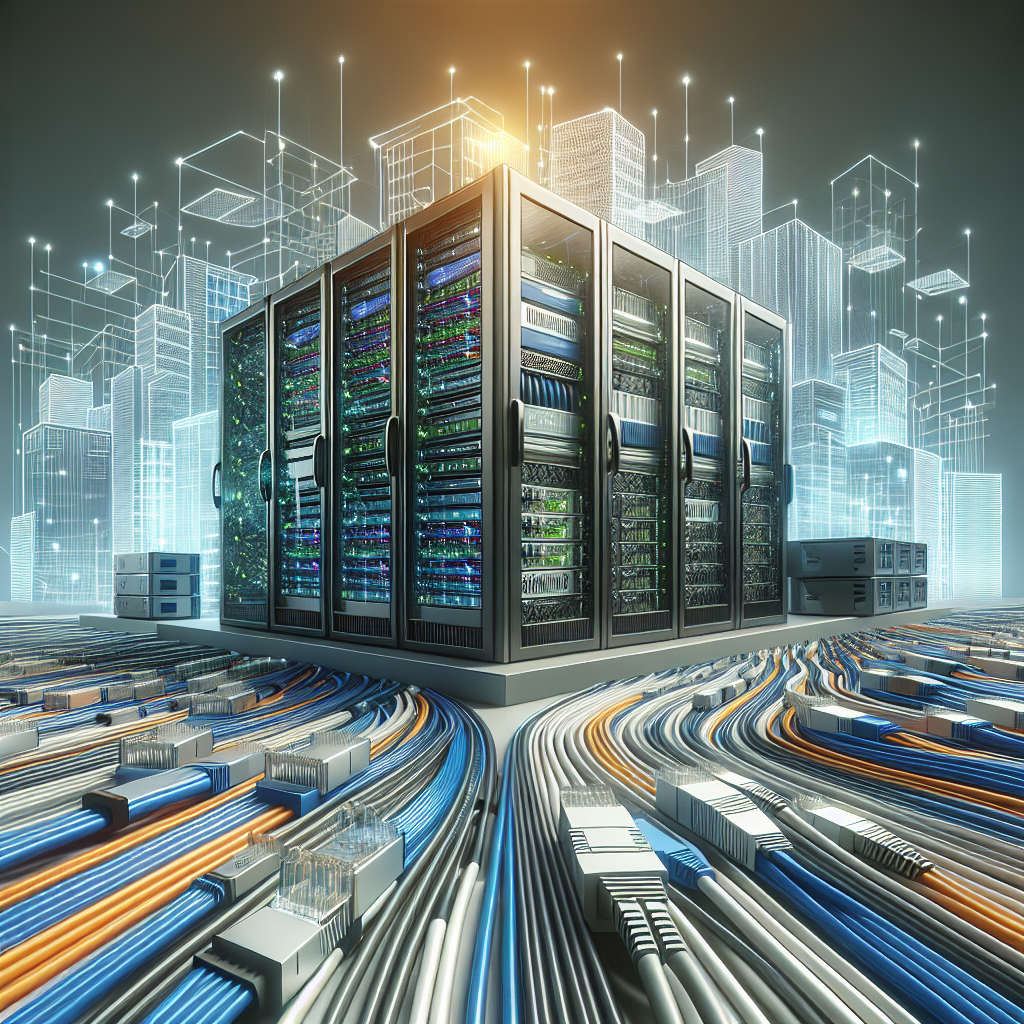
Future-Proofing Your Data Center with Scalable Cabling Solutions
As technology continues to advance at a rapid pace, data centers are facing increasing pressure to keep up with the demands of modern data processing and storage requirements. One key aspect of future-proofing a data center is ensuring that the cabling infrastructure is capable of supporting the ever-increasing data transmission speeds and bandwidth requirements.Traditional copper cabling solutions are often limited in terms of scalability and bandwidth, making them less suitable for future-proofing a data center. In contrast, fiber optic cabling offers significantly higher bandwidth and faster data transmission speeds, making it a more future-proof solution for data centers.
One of the key advantages of fiber optic cabling is its scalability. Fiber optic cables can support much higher data transmission speeds than copper cables, allowing data centers to easily upgrade their cabling infrastructure as their needs grow. Additionally, fiber optic cables are more durable and less prone to interference, making them a more reliable option for high-speed data transmission.
Another important consideration when future-proofing a data center is the ability to support emerging technologies such as 5G, IoT, and artificial intelligence. These technologies are driving an exponential increase in data processing and storage requirements, making it essential for data centers to have a cabling infrastructure that can keep up with these demands.
Scalable cabling solutions such as pre-terminated fiber optic cabling systems offer a cost-effective and efficient way to future-proof a data center. These systems are designed to be easily scalable, allowing data centers to quickly and easily add or upgrade their cabling infrastructure as needed. Additionally, pre-terminated fiber optic cabling systems are highly reliable and require less maintenance than traditional cabling solutions, reducing the risk of downtime and ensuring a seamless data transmission experience.
In conclusion, future-proofing a data center with scalable cabling solutions is essential for ensuring that the infrastructure can support the increasing demands of modern data processing and storage requirements. Fiber optic cabling offers a high-bandwidth, reliable, and scalable solution that can help data centers stay ahead of the curve and adapt to emerging technologies. By investing in scalable cabling solutions, data centers can ensure that their infrastructure is well-equipped to handle the data processing needs of the future.
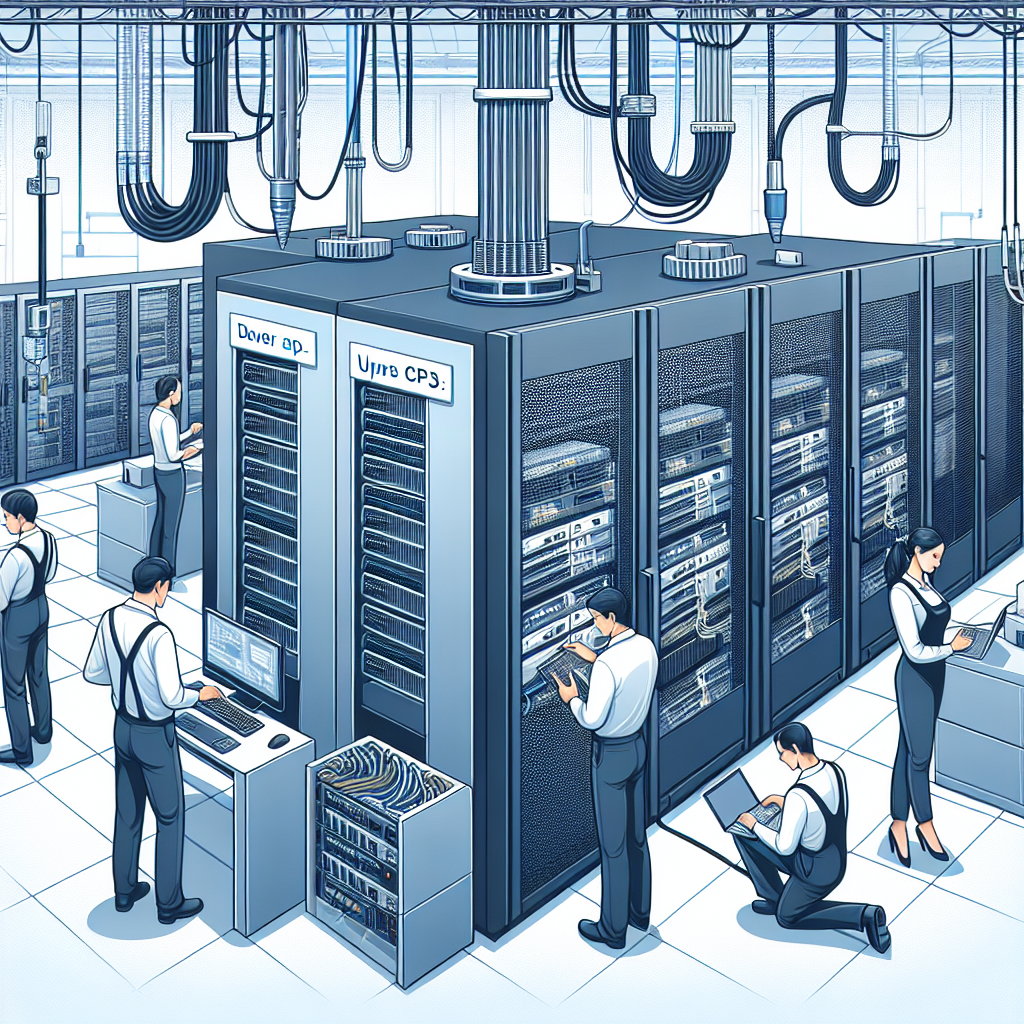
Case Studies: Real-World Examples of UPS Solutions in Data Center Environments
Data centers are the backbone of modern businesses, providing the necessary infrastructure to store, process, and manage vast amounts of data. With the increasing reliance on technology, the need for reliable power solutions in data center environments has become paramount. Uninterruptible Power Supply (UPS) systems play a critical role in ensuring continuous power supply to data centers, safeguarding against downtime and data loss.UPS systems provide backup power in the event of a power outage or disruption, allowing data centers to continue operating smoothly without any interruptions. UPS solutions come in various forms, including standby, line-interactive, and online UPS systems, each offering different levels of protection and efficiency. In this article, we will explore real-world case studies of UPS solutions in data center environments, showcasing their importance and effectiveness in ensuring reliable power supply.
Case Study 1: Google Data Center
Google is known for its massive data centers that power its search engine and other services. To ensure uninterrupted operation, Google relies on UPS systems to provide backup power during outages. In one instance, a UPS system at a Google data center in Iowa kicked in during a power outage, preventing any disruptions to its services. The UPS system allowed the data center to continue operating seamlessly until primary power was restored, demonstrating the critical role UPS solutions play in maintaining uptime and reliability.
Case Study 2: Facebook Data Center
Facebook operates several data centers around the world to support its social networking platform. In one of its data centers in Sweden, Facebook implemented a state-of-the-art UPS system to ensure continuous power supply. The UPS system proved its worth during a severe storm that caused a power outage in the region. Despite the external challenges, the UPS system kept the data center running without any interruptions, showcasing its reliability and resilience in adverse conditions.
Case Study 3: Amazon Web Services (AWS)
Amazon Web Services (AWS) is a leading cloud computing platform that hosts a vast array of services and applications. To maintain its reputation for high availability and reliability, AWS relies on UPS solutions in its data centers. In a recent case, a UPS system at an AWS data center in Virginia detected a power surge and automatically switched to battery power to protect the critical infrastructure. The UPS system effectively mitigated the impact of the power surge, ensuring uninterrupted operation of the data center and preventing any data loss.
These case studies highlight the importance of UPS solutions in data center environments and their role in safeguarding against power disruptions. By implementing reliable UPS systems, businesses can ensure continuous operation of their data centers, protect against downtime, and maintain the integrity of their critical data and services. As technology continues to evolve, the need for robust power solutions like UPS systems will only grow, making them an essential investment for any organization operating in a data center environment.

Achieving Sustainability: Green Solutions for Data Center Power Distribution
In today’s digital age, data centers play a crucial role in storing and processing vast amounts of information for businesses and organizations. However, the energy consumption of these facilities is a growing concern, as they require a significant amount of power to operate efficiently. In order to achieve sustainability and reduce the environmental impact of data centers, green solutions for power distribution are becoming increasingly important.One of the key challenges in achieving sustainability in data centers is the high energy consumption associated with power distribution. Traditional power distribution systems are often inefficient, leading to waste and increased operating costs. In order to address this issue, data center operators are turning to green solutions that prioritize energy efficiency and environmental responsibility.
One green solution for data center power distribution is the use of renewable energy sources, such as solar or wind power. By generating electricity from renewable sources, data centers can reduce their reliance on fossil fuels and lower their carbon footprint. In addition to being more sustainable, renewable energy sources can also be more cost-effective in the long run, as they offer a stable and predictable source of power.
Another green solution for data center power distribution is the implementation of energy-efficient technologies, such as power distribution units (PDUs) with intelligent monitoring and control capabilities. These smart PDUs can help data center operators optimize their power distribution systems, reduce energy waste, and improve overall efficiency. By monitoring power consumption in real-time and adjusting power distribution accordingly, smart PDUs can help data centers achieve significant energy savings and reduce their environmental impact.
Furthermore, data center operators can also consider implementing energy-saving practices, such as virtualization and consolidation, to reduce the overall power consumption of their facilities. By consolidating servers and storage devices, data centers can reduce the number of physical machines that need to be powered, leading to lower energy consumption and operational costs. Virtualization technologies can also help data centers maximize the use of their resources and improve overall efficiency.
In conclusion, achieving sustainability in data center power distribution is crucial for reducing the environmental impact of these facilities and ensuring a more sustainable future. By implementing green solutions such as renewable energy sources, energy-efficient technologies, and energy-saving practices, data center operators can significantly reduce their carbon footprint and operating costs. As the demand for data centers continues to grow, it is essential for operators to prioritize sustainability and embrace green solutions for power distribution. By investing in sustainable practices now, data centers can help protect the environment and create a more sustainable future for generations to come.
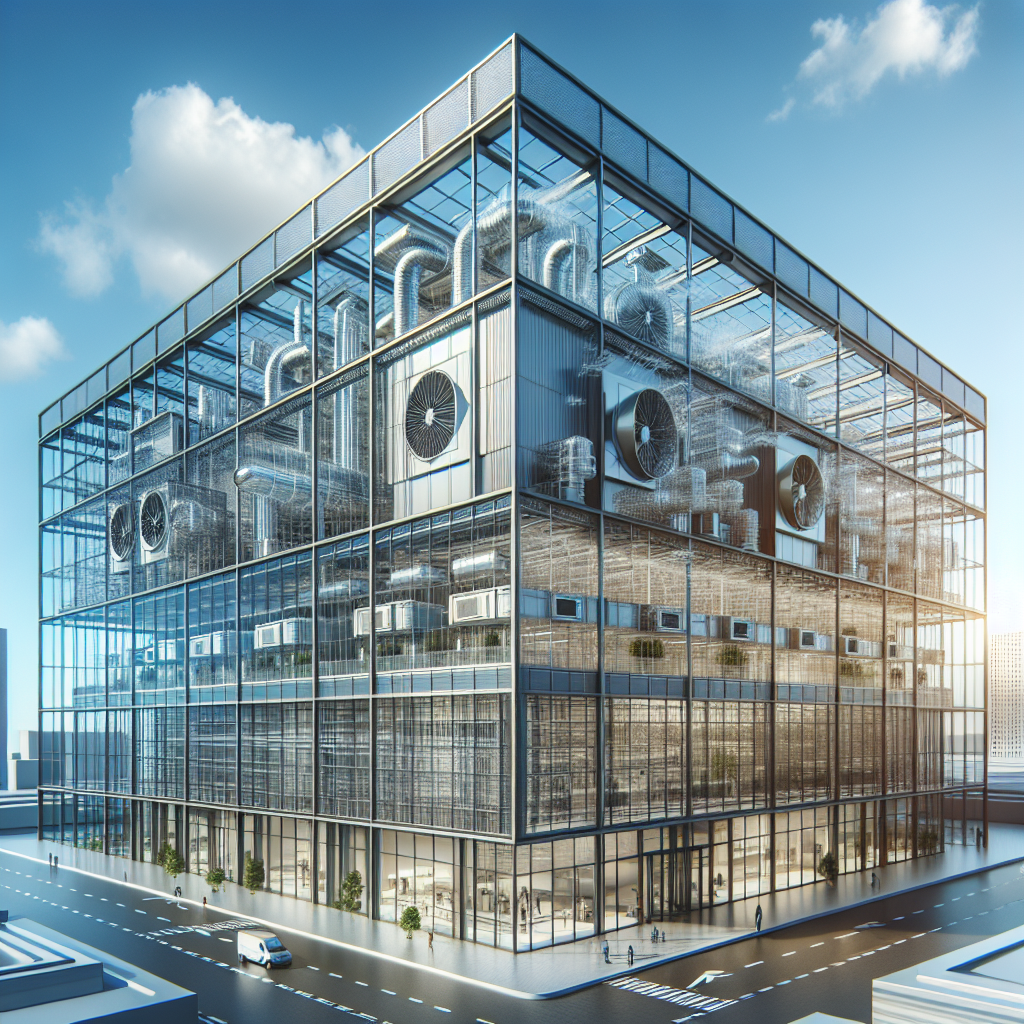
Ventilation Solutions for Commercial Buildings
Proper ventilation is crucial in commercial buildings to ensure a healthy and comfortable indoor environment for occupants. Without adequate ventilation, indoor air quality can deteriorate, leading to a range of health issues and discomfort. In addition, poor ventilation can also result in the build-up of harmful pollutants and odors, as well as mold and mildew growth.There are several ventilation solutions available for commercial buildings, each with its own benefits and considerations. Here are some key ventilation options to consider:
1. Mechanical Ventilation Systems: Mechanical ventilation systems use fans and ducts to bring fresh air into the building and expel stale air. These systems can be designed to provide constant airflow or to operate on a variable basis, depending on the building’s occupancy and usage. Mechanical ventilation systems are typically more energy-efficient than natural ventilation and can be controlled to optimize indoor air quality.
2. Natural Ventilation: Natural ventilation relies on the natural flow of air through windows, doors, and other openings in the building. This can be an effective solution in buildings with well-designed ventilation openings and cross-ventilation opportunities. However, natural ventilation may not always be sufficient to provide adequate air exchange, especially in larger or more complex commercial buildings.
3. Exhaust Fans: Exhaust fans are commonly used in commercial buildings to remove stale air and odors from bathrooms, kitchens, and other spaces. Exhaust fans can be installed in individual rooms or connected to a central ventilation system. Properly sized and installed exhaust fans can help maintain good indoor air quality and prevent the build-up of moisture and pollutants.
4. Energy Recovery Ventilation (ERV) Systems: ERV systems are designed to recover heat or coolness from the outgoing air and transfer it to the incoming fresh air. This can help reduce energy costs by pre-conditioning the fresh air and maintaining a comfortable indoor temperature. ERV systems are particularly beneficial in buildings with high ventilation requirements and can help improve indoor air quality while minimizing energy consumption.
5. Demand-Controlled Ventilation: Demand-controlled ventilation systems adjust the airflow based on occupancy levels, indoor air quality, and other factors. These systems use sensors and controls to modulate the ventilation rate, ensuring that fresh air is provided only when needed. Demand-controlled ventilation can help optimize energy efficiency and indoor air quality in commercial buildings with varying occupancy patterns.
In conclusion, proper ventilation is essential for maintaining a healthy and comfortable indoor environment in commercial buildings. By choosing the right ventilation solutions and implementing them effectively, building owners and facility managers can ensure good indoor air quality, energy efficiency, and occupant comfort. It is important to consult with HVAC professionals and ventilation experts to design and install ventilation systems that meet the specific needs of the building and its occupants.
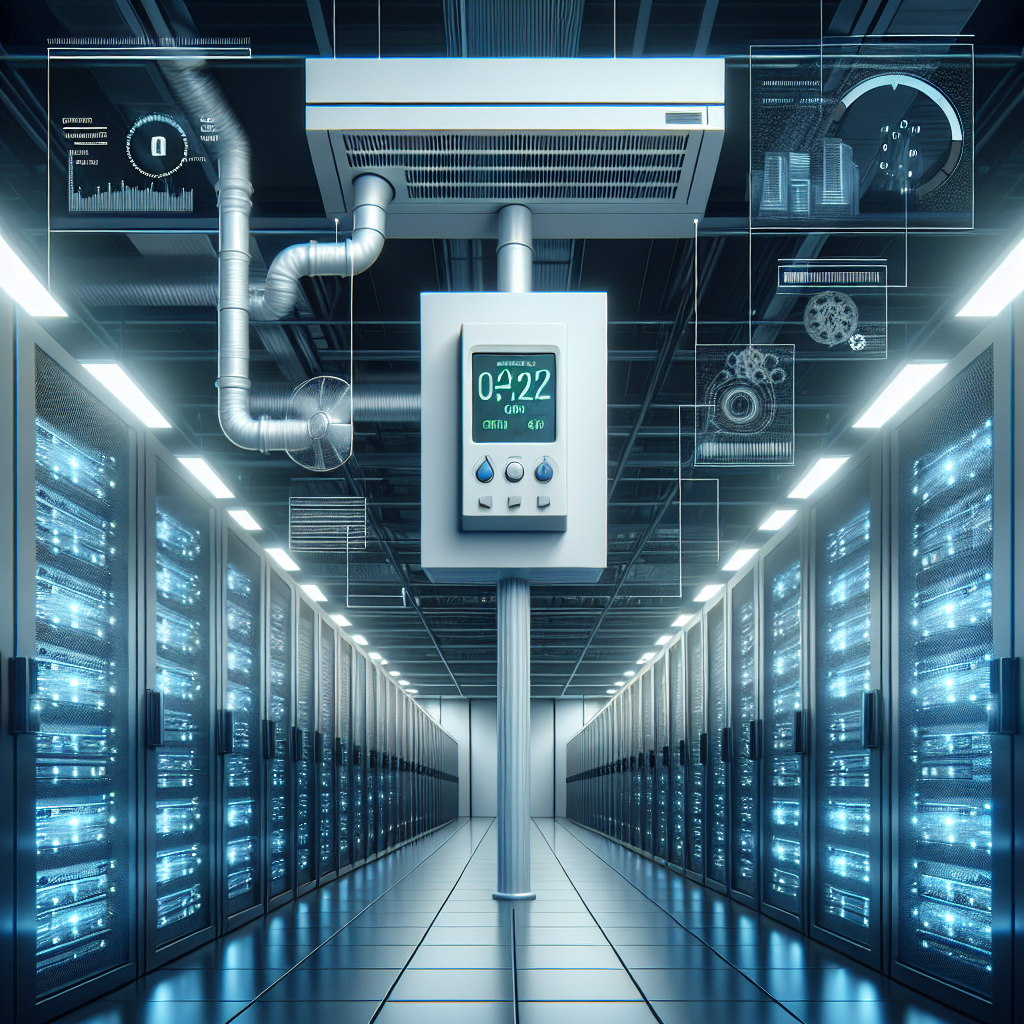
The Benefits of Energy-Efficient HVAC Solutions for Data Centers
Data centers are vital to the functioning of modern businesses, as they house the servers and infrastructure that store and process large amounts of data. With the increasing demand for data storage and processing capabilities, data centers are consuming more energy than ever before. In fact, data centers are estimated to account for around 2% of global electricity consumption.One way to reduce the energy consumption of data centers is by implementing energy-efficient HVAC solutions. HVAC systems are responsible for maintaining the optimal temperature and humidity levels in data centers, ensuring that the equipment operates efficiently and reliably. By using energy-efficient HVAC solutions, data centers can reduce their energy consumption, lower their operating costs, and decrease their carbon footprint.
There are several benefits to using energy-efficient HVAC solutions in data centers. One of the main benefits is cost savings. Energy-efficient HVAC systems consume less energy, which translates to lower electricity bills for data center operators. In addition, energy-efficient HVAC systems require less maintenance and are more reliable, reducing the risk of costly downtime due to equipment failures.
Another benefit of energy-efficient HVAC solutions is improved environmental sustainability. Data centers are known for their high energy consumption and carbon emissions, contributing to climate change and environmental degradation. By using energy-efficient HVAC systems, data centers can reduce their carbon footprint and minimize their impact on the environment.
Furthermore, energy-efficient HVAC solutions can also improve the overall performance and reliability of data centers. By maintaining the optimal temperature and humidity levels, energy-efficient HVAC systems help to prevent overheating and equipment failures, ensuring that data centers operate smoothly and efficiently.
In conclusion, the benefits of energy-efficient HVAC solutions for data centers are clear. By reducing energy consumption, lowering operating costs, improving environmental sustainability, and enhancing performance and reliability, energy-efficient HVAC systems are a valuable investment for data center operators. As the demand for data storage and processing continues to grow, implementing energy-efficient HVAC solutions is essential for building a sustainable and efficient data center infrastructure.
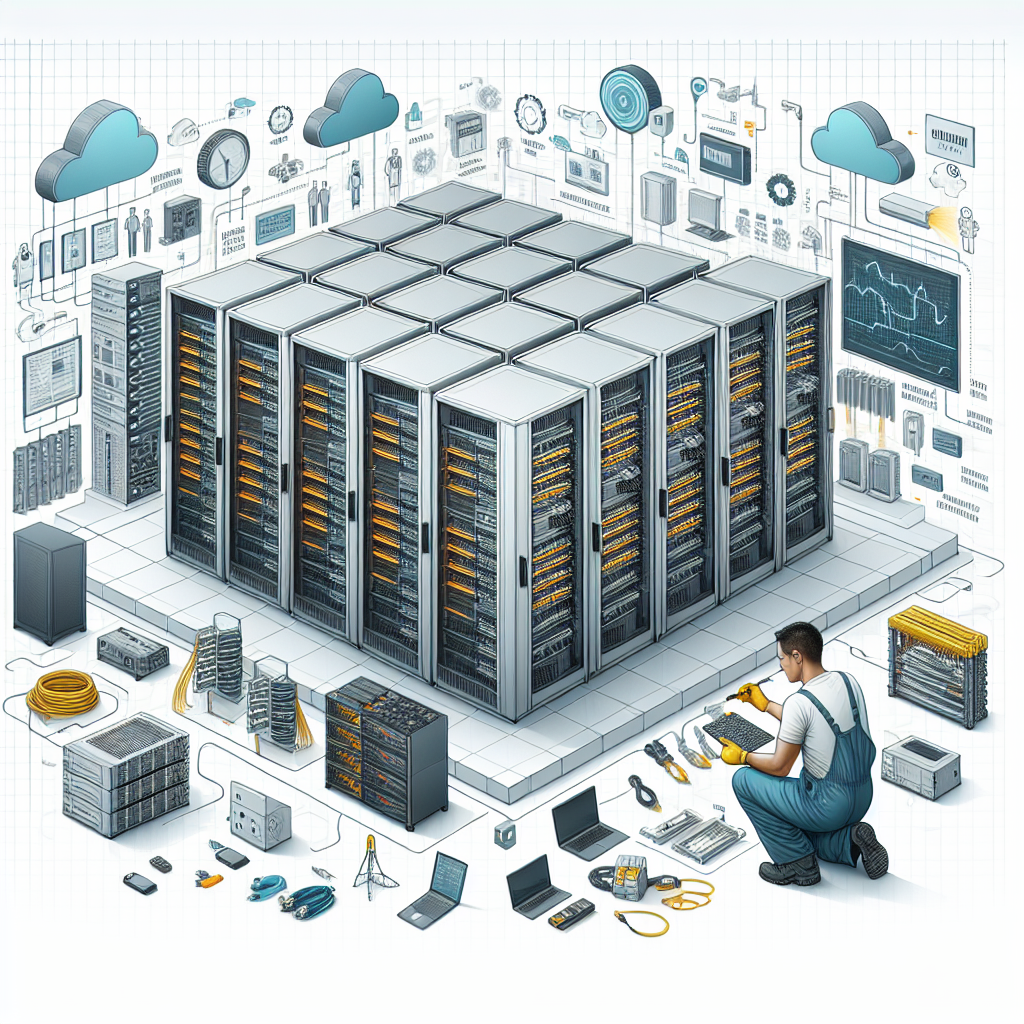
Data Center Maintenance: Addressing Common Challenges and Solutions
Data centers are the backbone of modern businesses, providing the infrastructure needed to store, manage, and process vast amounts of data. However, with great power comes great responsibility, as data center maintenance is crucial to ensuring the reliability and efficiency of these critical facilities. In this article, we will discuss some common challenges faced by data center operators and provide solutions to help address them.One of the most common challenges in data center maintenance is ensuring proper cooling and ventilation. Data centers generate a significant amount of heat due to the high-powered servers and networking equipment they house. If not properly managed, this heat can lead to equipment failure and downtime. To address this challenge, data center operators should regularly monitor temperatures, ensure proper airflow, and consider investing in energy-efficient cooling solutions such as hot aisle/cold aisle containment systems or liquid cooling technologies.
Another challenge faced by data center operators is power management. With the increasing demand for data processing and storage, data centers consume a significant amount of electricity. This not only leads to high operating costs but also puts a strain on the local power grid. To mitigate this challenge, data center operators can implement energy-efficient practices such as virtualization, server consolidation, and using renewable energy sources. Additionally, investing in power management tools and monitoring systems can help optimize energy usage and reduce costs.
Security is another major concern for data center operators. Data centers house sensitive and valuable information, making them prime targets for cyberattacks and physical breaches. To address this challenge, data center operators should implement robust security measures such as access controls, surveillance systems, firewalls, and encryption protocols. Regular security audits and penetration testing can help identify vulnerabilities and ensure compliance with industry regulations.
Finally, data center operators must also address the challenge of scalability. As businesses grow and data requirements increase, data centers need to be able to scale up to accommodate this growth. This can be achieved through modular design, flexible infrastructure, and cloud-based solutions. By planning for scalability from the outset and regularly assessing capacity needs, data center operators can ensure that their facilities can adapt to changing business requirements.
In conclusion, data center maintenance is a complex and challenging task that requires careful planning and attention to detail. By addressing common challenges such as cooling, power management, security, and scalability, data center operators can ensure the reliability and efficiency of their facilities. By implementing best practices and investing in the right technologies, data center operators can minimize downtime, reduce costs, and maximize the performance of their data centers.
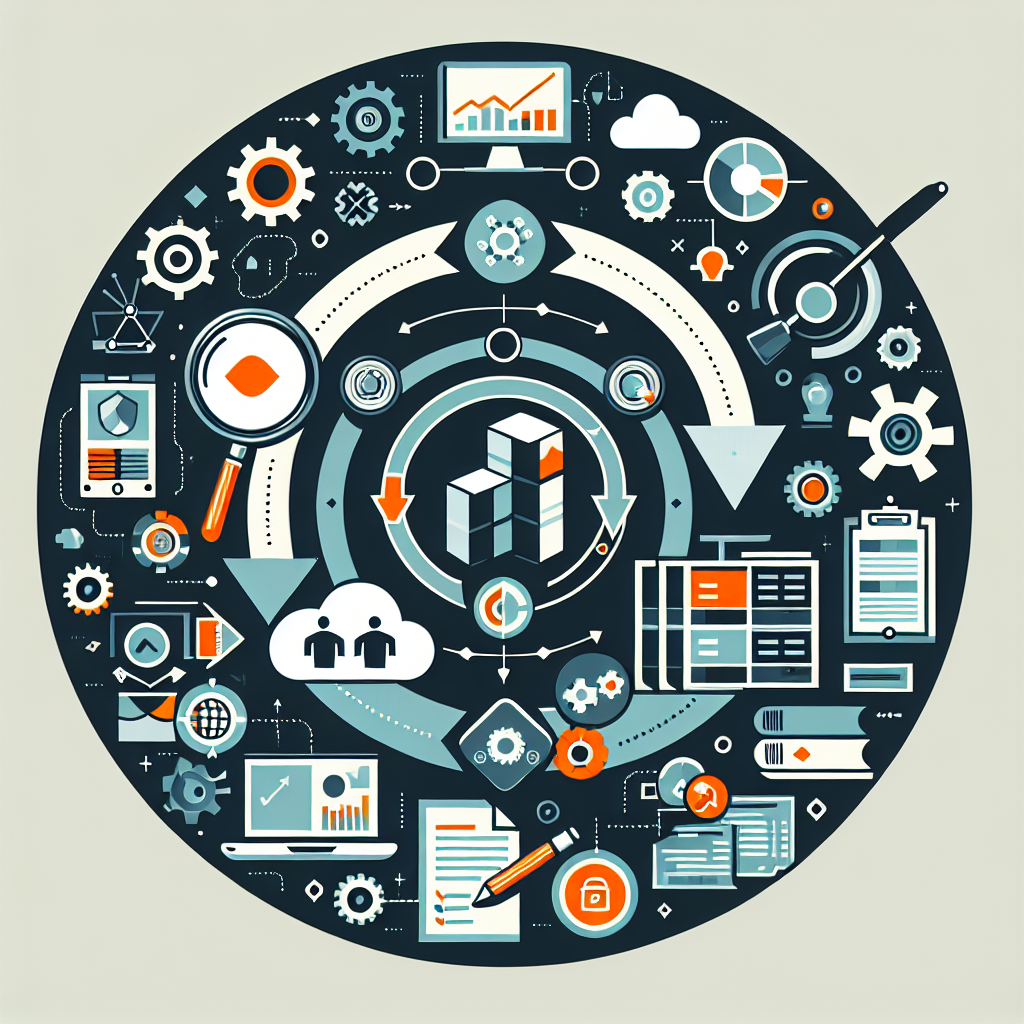
Challenges and Solutions in Data Center Lifecycle Management: A Case Study Approach
Data centers are the backbone of modern businesses, providing the infrastructure and services necessary for storing, processing, and managing vast amounts of data. However, managing the lifecycle of a data center presents a unique set of challenges that can impact the efficiency and effectiveness of an organization’s operations. In this article, we will explore some common challenges faced in data center lifecycle management and discuss potential solutions through a case study approach.Challenge 1: Aging Infrastructure
One of the most common challenges in data center management is dealing with aging infrastructure. As data centers age, they become less efficient and reliable, leading to increased downtime and higher maintenance costs. This can have a significant impact on an organization’s bottom line and overall performance.
Solution: Data Center Migration
A case study example of addressing aging infrastructure is the migration of data centers to a new location or to the cloud. By moving to a newer and more efficient data center environment, organizations can improve performance, reduce downtime, and lower maintenance costs. This solution requires careful planning and coordination to ensure a smooth transition and minimal disruption to operations.
Challenge 2: Capacity Planning
Another challenge in data center lifecycle management is capacity planning. As data volumes continue to grow, organizations must ensure that their data centers have enough capacity to meet current and future demands. Without proper planning, organizations risk running out of space, power, or cooling capacity, leading to performance issues and potential downtime.
Solution: Data Center Consolidation
One solution to capacity planning challenges is data center consolidation. By consolidating multiple data centers into a single, more efficient facility, organizations can optimize their resources and improve scalability. This approach can help reduce operating costs, improve data center efficiency, and simplify management processes. A case study example of data center consolidation is when a large financial institution consolidated several data centers into a single, state-of-the-art facility, resulting in cost savings and improved performance.
Challenge 3: Security and Compliance
Data center security and compliance are critical considerations for organizations managing sensitive data. Ensuring that data centers meet regulatory requirements and maintain the highest levels of security is essential to protecting valuable information and maintaining customer trust.
Solution: Data Center Audits and Upgrades
One solution to security and compliance challenges is conducting regular audits and upgrades of data center security systems. By regularly assessing security measures, organizations can identify and address vulnerabilities before they become a threat. Upgrading security systems and implementing best practices can help strengthen data center security and ensure compliance with industry regulations. A case study example of this solution is when a healthcare organization conducted a comprehensive security audit of its data center and implemented new security measures to protect patient data and comply with HIPAA regulations.
In conclusion, managing the lifecycle of a data center presents a unique set of challenges that can impact an organization’s efficiency and effectiveness. By addressing common challenges such as aging infrastructure, capacity planning, and security and compliance, organizations can optimize their data center operations and improve overall performance. Through a case study approach, organizations can learn from real-world examples and implement solutions that meet their specific needs and requirements.
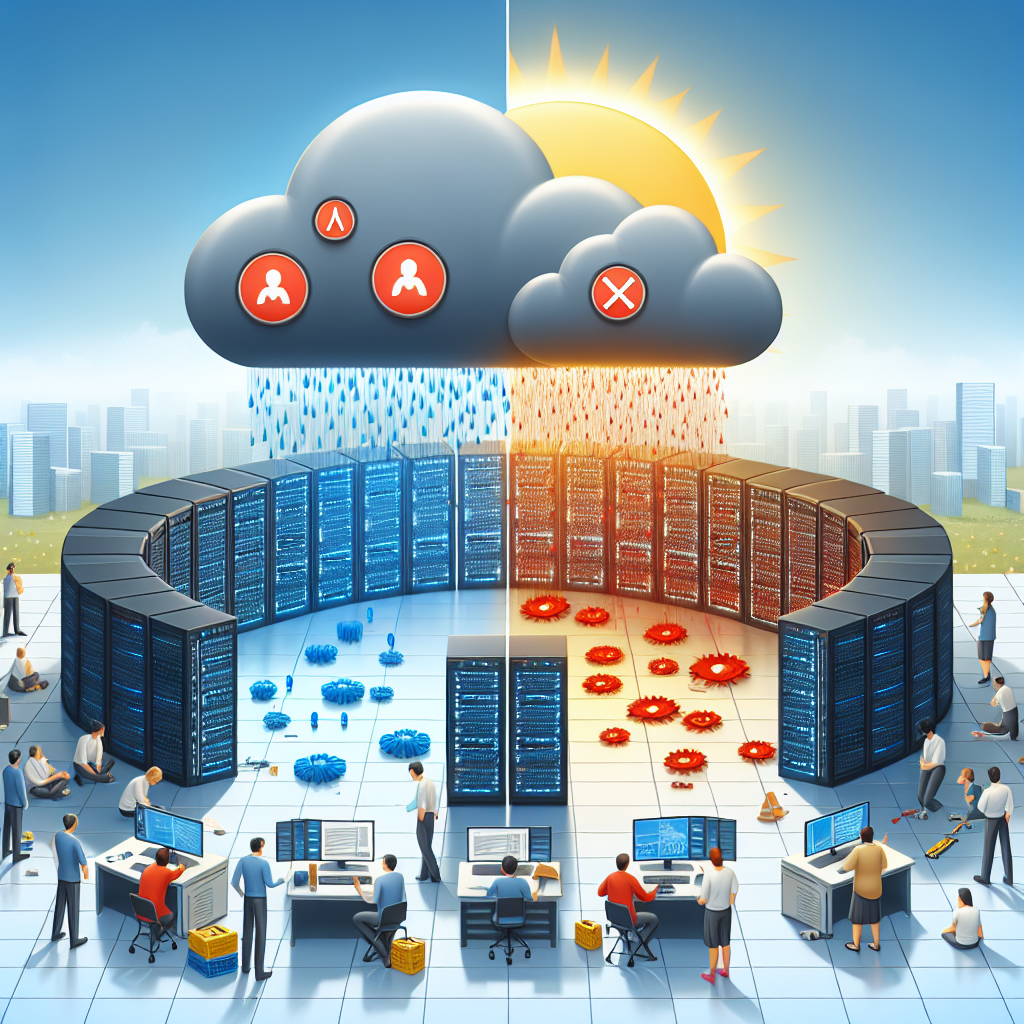
Common Challenges and Solutions in Data Center Auditing
Data center auditing is a crucial process for ensuring the security, efficiency, and compliance of a data center environment. However, it can be a complex and challenging task, with various obstacles that auditors may encounter. In this article, we will discuss some common challenges faced during data center auditing and provide possible solutions to overcome them.One of the most common challenges in data center auditing is the sheer size and complexity of modern data centers. With thousands of servers, storage devices, networking equipment, and applications to manage, auditors may struggle to collect and analyze all the necessary data. This can lead to incomplete or inaccurate audit results, putting the data center at risk of security breaches or compliance violations.
To address this challenge, auditors can implement automated auditing tools and software that can scan and collect data from various sources within the data center. These tools can help streamline the auditing process, improve data accuracy, and provide real-time insights into the data center environment.
Another challenge in data center auditing is ensuring compliance with industry regulations and standards. Data centers are subject to a myriad of regulations, such as the General Data Protection Regulation (GDPR), Payment Card Industry Data Security Standard (PCI DSS), and Health Insurance Portability and Accountability Act (HIPAA). Auditors must ensure that the data center meets all the necessary requirements to avoid fines, penalties, and legal consequences.
To tackle this challenge, auditors should stay up-to-date on the latest regulations and standards in the industry. They should conduct regular audits to assess compliance levels and identify any gaps or vulnerabilities that need to be addressed. Additionally, auditors can work closely with compliance experts and legal advisors to ensure that the data center meets all regulatory requirements.
Data center auditing also faces challenges related to data security and privacy. Auditors must ensure that sensitive data is protected from unauthorized access, theft, or misuse. This includes securing physical access to the data center, implementing encryption and access controls, and monitoring data flows to detect any suspicious activities.
To enhance data security during audits, auditors should conduct regular security assessments and penetration tests to identify vulnerabilities and weaknesses in the data center infrastructure. They should also implement strong authentication mechanisms, encryption protocols, and monitoring tools to safeguard sensitive data from potential threats.
In conclusion, data center auditing poses several challenges that auditors must overcome to ensure the security, efficiency, and compliance of the data center environment. By implementing automated auditing tools, staying compliant with regulations, and enhancing data security measures, auditors can address these challenges effectively and maintain a secure and compliant data center environment.
